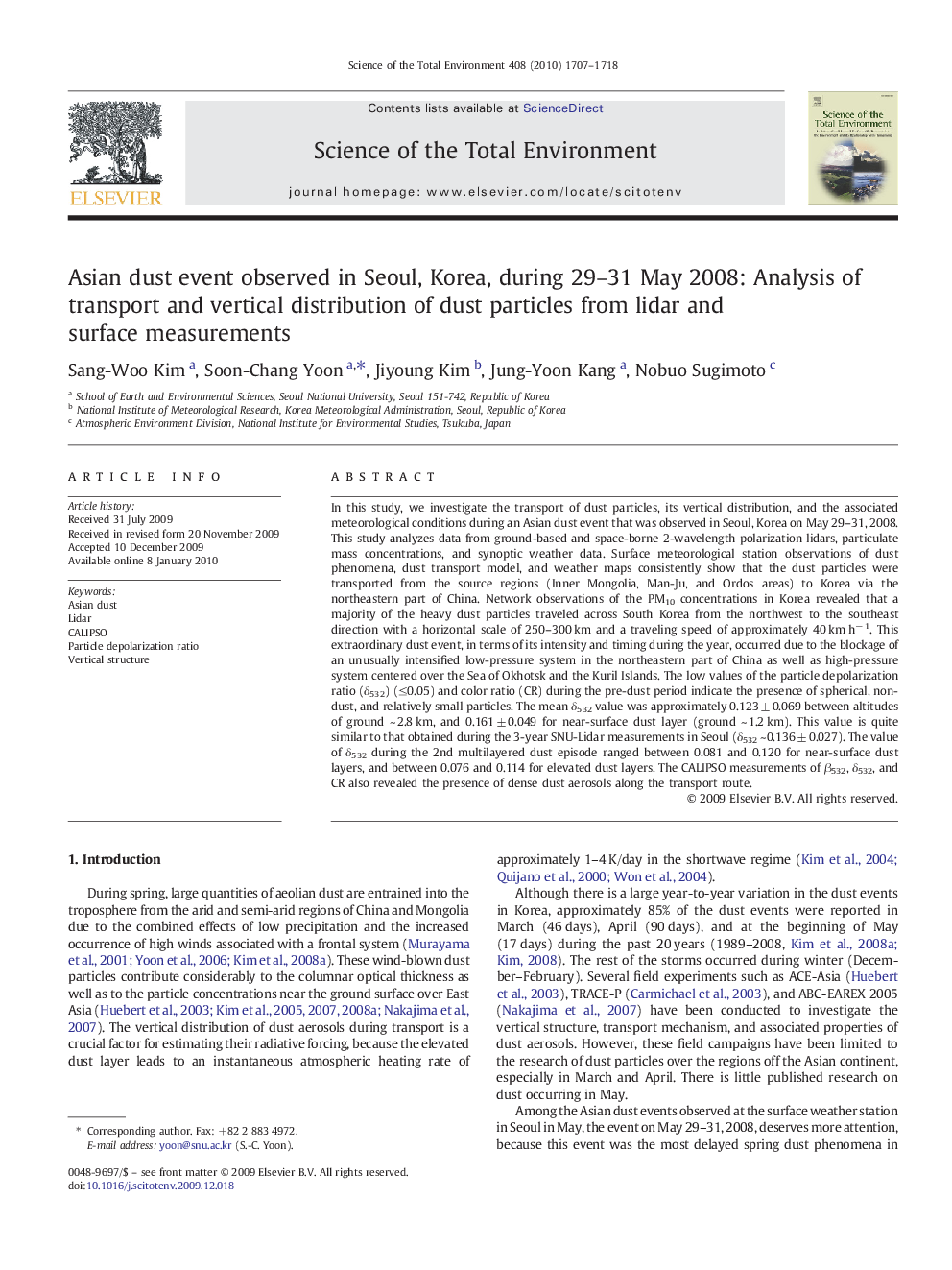| Article ID | Journal | Published Year | Pages | File Type |
|---|---|---|---|---|
| 4432077 | Science of The Total Environment | 2010 | 12 Pages |
In this study, we investigate the transport of dust particles, its vertical distribution, and the associated meteorological conditions during an Asian dust event that was observed in Seoul, Korea on May 29–31, 2008. This study analyzes data from ground-based and space-borne 2-wavelength polarization lidars, particulate mass concentrations, and synoptic weather data. Surface meteorological station observations of dust phenomena, dust transport model, and weather maps consistently show that the dust particles were transported from the source regions (Inner Mongolia, Man-Ju, and Ordos areas) to Korea via the northeastern part of China. Network observations of the PM10 concentrations in Korea revealed that a majority of the heavy dust particles traveled across South Korea from the northwest to the southeast direction with a horizontal scale of 250–300 km and a traveling speed of approximately 40 km h− 1. This extraordinary dust event, in terms of its intensity and timing during the year, occurred due to the blockage of an unusually intensified low-pressure system in the northeastern part of China as well as high-pressure system centered over the Sea of Okhotsk and the Kuril Islands. The low values of the particle depolarization ratio (δ532) (≤0.05) and color ratio (CR) during the pre-dust period indicate the presence of spherical, non-dust, and relatively small particles. The mean δ532 value was approximately 0.123 ± 0.069 between altitudes of ground ~ 2.8 km, and 0.161 ± 0.049 for near-surface dust layer (ground ~ 1.2 km). This value is quite similar to that obtained during the 3-year SNU-Lidar measurements in Seoul (δ532 ~0.136 ± 0.027). The value of δ532 during the 2nd multilayered dust episode ranged between 0.081 and 0.120 for near-surface dust layers, and between 0.076 and 0.114 for elevated dust layers. The CALIPSO measurements of β532, δ532, and CR also revealed the presence of dense dust aerosols along the transport route.
